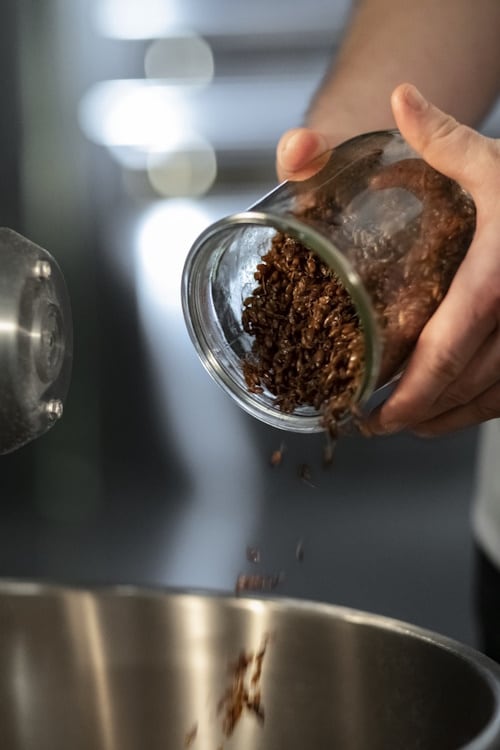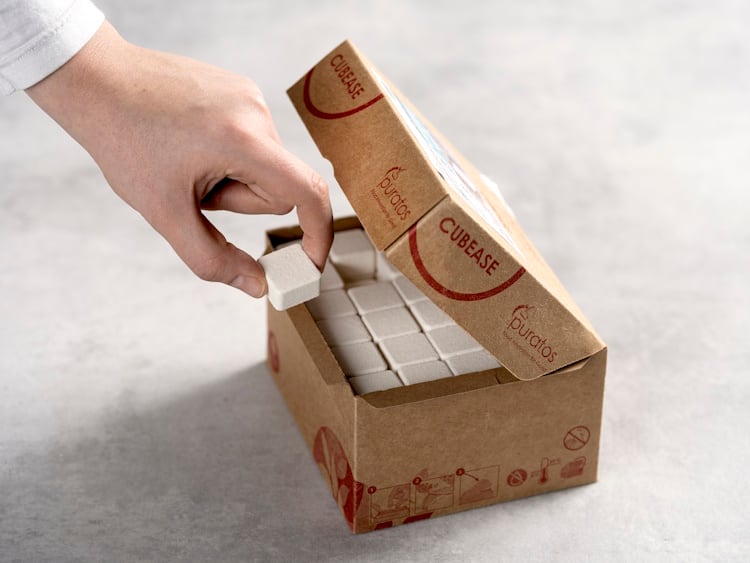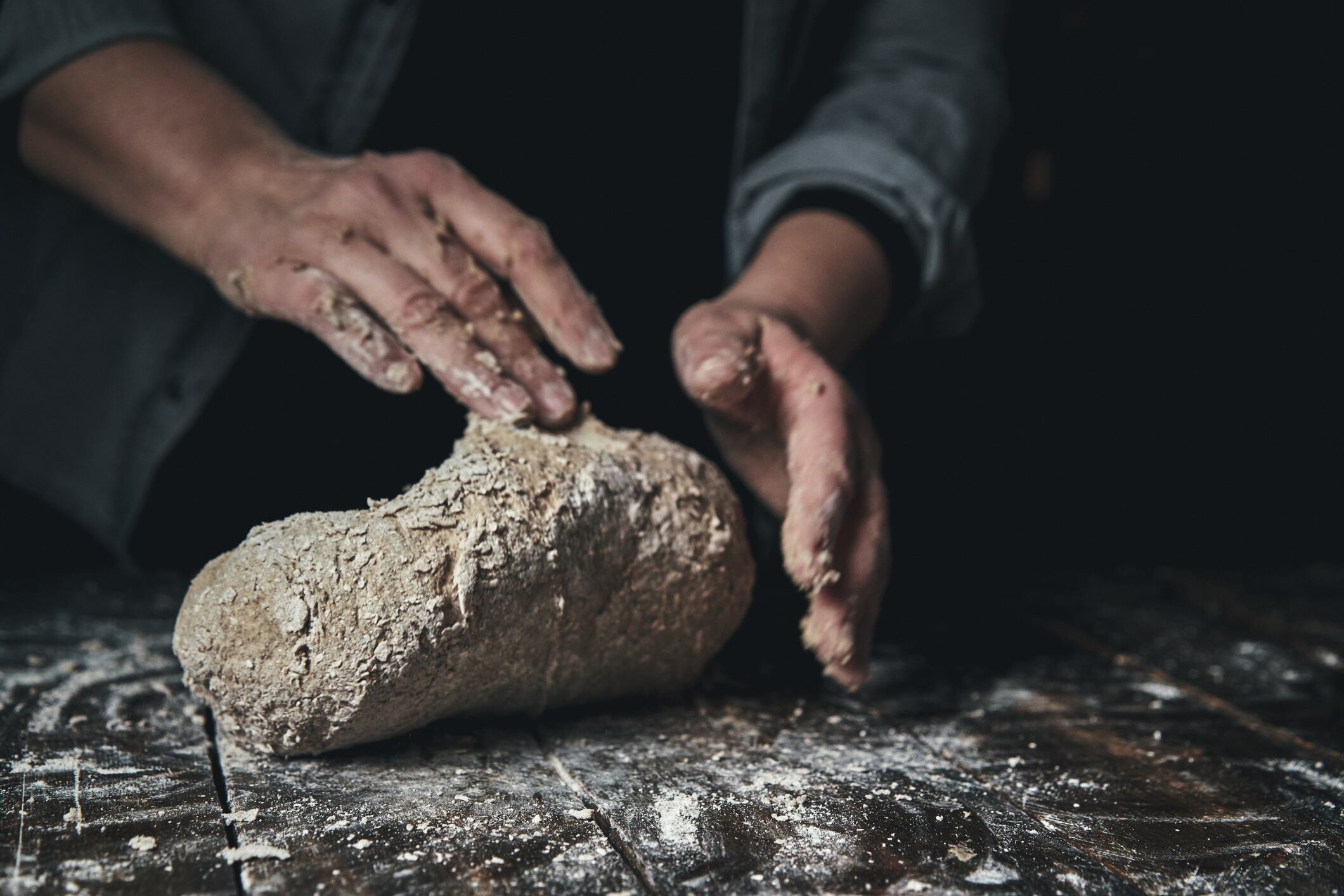Key insights:
- Consumers want it all – health, indulgence, and shareability.
- Agility is essential to keep up with fast-moving trends.
- Smart reformulation cuts impact without losing taste.
There’s a storm quietly battering the global bakery industry and it’s not just rising input costs or supply chain instability. It’s something more complex, more consumer-driven, and far harder to scale: the demand for everything.
Shoppers want sourdough that’s high in fiber, free from additives, fermented for gut health, and still soft enough for kids’ lunchboxes. They want buttery brioche with a low carbon footprint. Cakes that look viral, feel indulgent, and list fewer than five ingredients. Bread that tastes artisanal but is priced like private label.
This is the Great Bakery Paradox – a convergence of high expectations, low tolerance, and market conditions that reward speed over tradition. Health, indulgence, sustainability, affordability, clean label, provenance – consumers aren’t choosing one or two anymore. They want the full package. And they expect bakeries to deliver it fast, consistently, and at scale.
According to data from Puratos’ Taste Tomorrow platform, 60% of consumers now use food to support their health yet 70% still say taste comes first. Meanwhile, social media is turning visual appeal into a primary trigger for purchase, pushing bakeries to create products that look as good as they taste.
That’s created a new kind of pressure. Bakers aren’t just juggling recipes – they’re balancing competing demands in a climate of tighter margins and faster turnarounds.
“It’s not just about making something delicious anymore,” Frederik Lievens, chief product officer at Puratos, tells us. “You have to balance taste, nutrition, sustainability, shelf life, and cost – and you have to be ready to switch directions when the next trend hits.”
And lately, those trends are moving at the speed of a scroll.
TikTok: From trendsetter to taskmaster

Bakers once had months to respond to shifting tastes. Now, a single 15-second video can catapult a niche flavor – like pistachio or yuzu – into global demand overnight.
“When Dubai Chocolate blew up on social, we already had insight showing pistachio was heating up,” says Lievens. “That allowed us to support customers quickly – with the right structures, flavors, and support to ride the wave.”
But virality doesn’t come with lead time. By the time something trends, bakeries need to be halfway to launch. This has pushed the industry toward modular formulations and agile systems, particularly in patisserie, where presentation is as critical as taste.
To keep pace with the scroll, many bakeries are leaning into flexible components and ready-to-use elements that can slot into existing systems without re-engineering production lines. Whether it’s soft-textured inclusions, adaptable dough formats, or versatile fillings – such as Puratos’ Smoobees – these tools allow teams to pivot fast and reliably.
“You can’t redesign your line every time a new flavor hits Instagram,” says Lievens. “You need versatile building blocks that support quick turnaround and creativity.”
These approaches also offer relief from a deeper industry challenge: skilled labor shortages. For many bakeries, reliability and repeatability are just as important as innovation.
“Plug-and-play isn’t just about speed – it’s about helping businesses maintain consistency even when talent is stretched,” he adds.
Indulgence versus impact

Brioche might be a bakery favorite, but its buttery richness comes at a cost – especially when it comes to carbon footprint. As sustainability climbs higher on the consumer radar, it’s also becoming a reformulation trigger.
Instead of cutting back just for cost, some manufacturers are now using tools like Product Environmental Footprint (PEF) analysis to guide recipe changes that make a measurable environmental difference. In one example, Puratos applied this approach to a classic brioche, managing to cut emissions by up to 40% and costs by around 25% without losing the taste or texture that makes it a bestseller.
“We used PEF tools to map where changes could make a meaningful difference,” says Lievens. “It’s possible to rethink iconic products and keep them delicious.”
As climate accountability tightens, expect more bakers to scrutinize their ingredient lists in the same way - making small swaps that deliver big impact, while keeping the product true to its promise.
Rethinking better-for-you

Better-for-you baking has been on the radar for years, but the goalposts keep shifting. It’s no longer enough for a loaf to be high in fiber or low in sugar – it also needs to look good, taste indulgent, and hold its own in a social media scroll.
Sprouted grains are stepping up as a way to hit that sweet spot between health and enjoyment. They offer nutritional perks like improved digestibility and higher fiber, while still delivering the softness and depth of flavor consumers expect. Just as importantly, they tick the boxes for naturalness and authenticity – qualities increasingly tied to perceived value.
“Sprouted grains are a great way to meet that balance,” says Lievens. “They bring nutritional benefits, but they also deliver on softness and taste.”
And for bakers juggling shelf-life or distribution demands, moisture retention is a big win. One example is Puratos’ ready-to-use sprouted rye, which is designed to stay fresher, longer, without compromising texture.
Agility is the competitive edge

Lievens notes growing demand for solutions that streamline production without sacrificing consistency or control. With fewer skilled hands and tighter margins, bakers are turning to simple, practical changes to ease the load.
From minimizing manual handling to simplifying dosing or saving space in the storeroom, it’s often the small tweaks that bring the biggest relief. Ingredient formats that are easier to store, measure, and apply – such as compact, pre-dosed improvers like those recently developed by Puratos – are increasingly helping bakers reduce day-to-day complexity.
“The fewer steps you need to manage manually, the more you can focus on quality and consistency,” says Lievens. “It’s about making every day work easier and more scalable.”
For many in the sector, streamlining has gone from convenience to necessity. Agility is no longer just a buzzword – it’s the baseline. With tastes shifting fast and resources stretched thin, bakeries need to make smart decisions quickly and adapt without disrupting output.
“The bakeries that succeed will be the ones that can move fast without cutting corners,” says Lievens. “That means having the right partners, the right data, and the right tools to respond in real time.”
Tools like Puratos’ Taste Tomorrow platform - combined with sensory testing and fast-turnaround prototyping - are helping some producers get ahead of the curve, instead of chasing it. “We can’t slow down the market,” Lievens adds. “But we can help our customers stay a step ahead.”
Final proof

The Great Bakery Paradox isn’t going away. Consumers will continue to demand more – nutritionally, ethically, emotionally – while trend cycles only speed up. But for bakeries equipped to respond with smarter systems, flexible structures, and sharper insight, there’s still plenty of room to rise.
“Baking is about transformation,” says Lievens. “And that applies to business just as much as dough.”
Because in an industry shaped by crumbs and clicks, it’s not just what you bake – it’s how fast, how smart, and how sustainably you can bring it to life.


